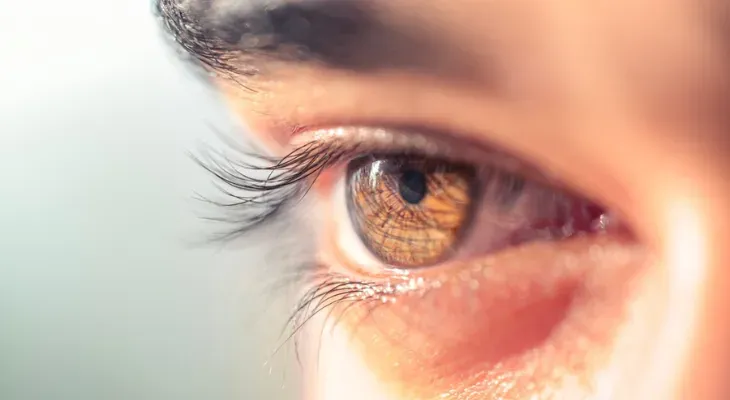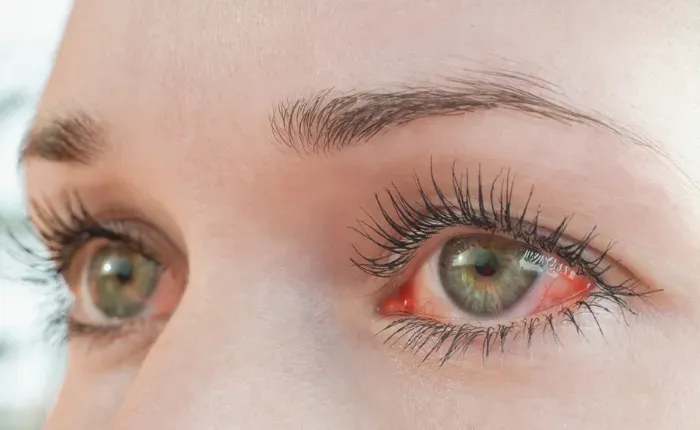Vision Topics

Inflammatory dry eye could be the reason that your eyes feel dry and irritated year-round. Luckily, your optometrist can offer treatment options that reduce inflammation and improve tear production. What Is Inflammatory Dry Eye? Dry eye occurs when tears evaporate too quickly, your eyes don't make enough tears, or the tears your body does make are of poor quality. The condition can be a problem if you spend time in a windy or smoky environment or don't blink often when using a digital screen. In some cases, dry eye can also be caused by inflammation. Inflammation may affect the quantity and quality of your tears and cause chronic dry eye.

Eye health is becoming harder to maintain due to our evolving habits. With the amount of time you spend staring at computer and smartphone screens, it may only be a matter of time before you experience eye issues. At Accent on Eyes, we can help keep your eyes in good condition by providing proper accessories and administering eye exams.

Have you ever tried on a pair of trendy eyeglasses only to discover the frames don't look quite so stylish on your face? No matter how attractive the frames, they probably weren't the right choice for the shape of your face. Selecting frames that complement your face shape makes frame shopping less stressful.

Eyestrain, headaches, blurry vision, and sore, dry eyes can be signs of a common vision ailment called computer vision syndrome (CVS). The condition affects people who use computers and other digital devices for hours every day. Managing Computer Vision Syndrome Symptoms Computer vision syndrome, also called digital eye strain, is a common ailment in the Internet age. Eighty percent of adults surveyed by The Vision Council in 2022 reported experiencing some CVS symptoms. CVS is a problem in children too. That's not surprising since kids 8 - 12 use screens four to six hours per day, while teens use digital devices up to nine hours per day, according to The American Academy of Child & Adolescent Psychiatry.

Have you recently started wearing contact lenses? It's not unusual to feel a little nervous when switching from eyeglasses to contacts. Whether you're concerned about inserting your lenses or identifying an inside-out lens, our tips will make wearing contact lenses a positive experience. Are you worried that you'll accidentally insert both contact lenses in the same eye? That's less likely to happen if you always insert the same lens first. Following an insertion and removal routine will also help you feel more comfortable when putting in and taking out your lenses.

Replacing scratched or broken eyeglasses can be expensive, particularly if you've already used your vision insurance coverage for the year. Although accidents may be unavoidable, damage can often be prevented by following these care recommendations. Soft cases provide some protection from scratches, but aren't as sturdy as hard cases. Hard plastic eyeglass cases offer the ultimate protection from breakage and scratches. Look for hard eyeglasses cases that close securely and include a scratch-resistant lining.

Think eye injuries only happen in factories or on construction sites? Although injuries are certainly more common at those jobs, they can occur in any type of workplace. Luckily, you can avoid injuries that threaten your vision by taking a few precautions at work. Don't Rub Your Eyes Have you ever moved a dusty box and gotten something in your eye? Although your natural inclination may be to rub your eye, rubbing grinds debris into your eye. If you don't resist the urge to rub your eyes, you may develop a painful abrasion on your cornea, the clear tissue that covers your iris. More than 59% of work eye injuries were caused by employees rubbing their eyes or foreign objects scaping the eye, according to the Bureau of Labor Statistics.

Optometrists evaluate much more than your ability to read the eye chart during your visit. They also look for subtle changes in your eyes that could mean you have a disease or health condition. Eye exams can uncover these five health issues: High cholesterol increases your risk for heart attacks, heart failure, heart disease, and stroke. These conditions affect the network of blood vessels circulating blood throughout your body. Although none of these conditions usually cause symptoms in the early stages, your health can still be affected even if you feel fine.

Extended wear contact lenses can be worn for seven to thirty days before removing them, depending on their type. They're made of thin, breathable silicone hydrogel, a material that allows more oxygen to pass through the lenses to your cornea. If the cornea doesn't get enough oxygen, you're more likely to develop inflammation or infection. Some rigid gas permeable (RGP) lenses are also suitable for extended wear.

Do your eyelashes stick together in the morning? Sticky eyes aren't uncommon and can be caused by a variety of conditions. Luckily, your optometrist offers several treatments to relieve your symptoms.Sticky eyes are usually most noticeable when you first try to open your eyes. Overnight, mucus or discharge builds up and makes your eyelids feel as if they're glued together. Sticky eyes can be a symptom of several conditions that affect the eyes, including:


